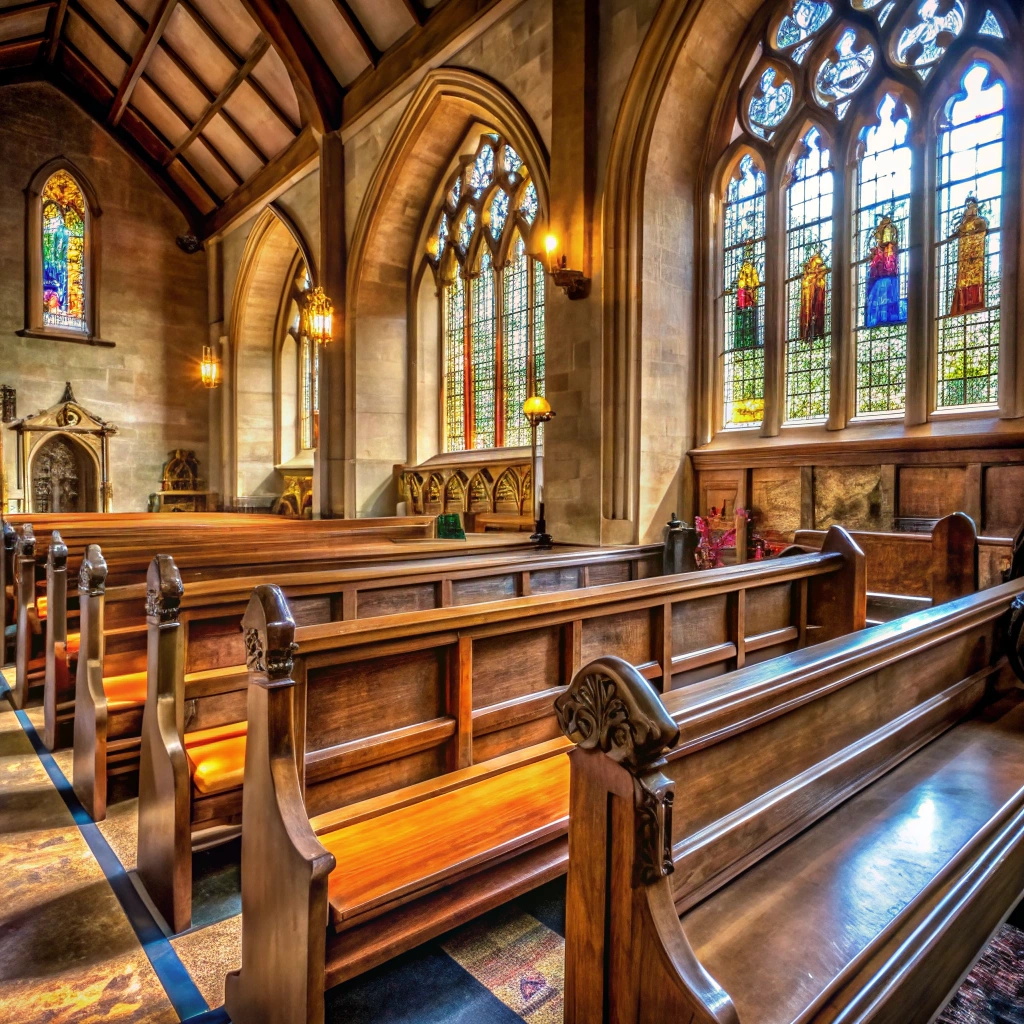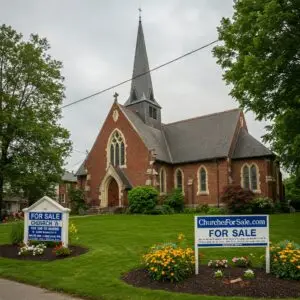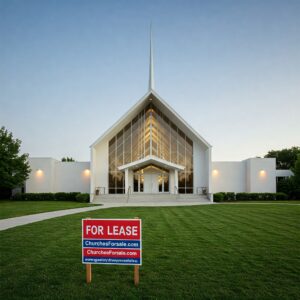
Refinancing Your Church Mortgage: When and How
Managing the finances of a church is a significant responsibility, especially when it comes to large commitments like a mortgage. For many congregations, the monthly mortgage payment is one of the largest expenses, directly impacting how much can be allocated to ministry, outreach, and community programs. As financial landscapes shift and your church’s needs evolve, refinancing your church mortgage can be a powerful tool to improve your financial health.
Refinancing means replacing your current mortgage with a new one-often with better terms. This can lower your monthly payments, secure a lower interest rate, or even free up equity that can be reinvested into your ministry.
With so many churches for sale and fluctuating interest rates, understanding when and how to refinance is crucial for good stewardship.
In this article, we’ll explore the benefits of refinancing, the best times to consider it, and the practical steps your church can take. Whether you’re looking to lower payments, access equity, or simply make your finances more predictable, this guide will help you navigate the refinancing process with confidence.
What Does Refinancing a Church Mortgage Mean?
Refinancing a church mortgage involves paying off your existing loan with a new one, typically from a different lender or under new terms. The process is similar to obtaining your original mortgage: your church will need to provide financial documentation, undergo an appraisal, and pay certain processing fees.
There are several types of refinancing options available. A rate and term refinance allows you to change your interest rate or loan term without increasing the loan amount, while a cash-out refinance lets you borrow more than you owe and receive the difference in cash to use for ministry needs. Each option has its own benefits and considerations, so it’s important to understand how they fit your church’s goals.
Refinancing is not the same as taking out a second mortgage. In refinancing, you replace your primary loan with a new one, often to get better terms or access equity, whereas a second mortgage is an additional loan secured by your property.
Why Refinance? Key Benefits for Churches
One of the main reasons churches refinance is to secure a lower interest rate. Even a modest reduction can lead to significant savings over the life of your loan, freeing up funds for ministry, outreach, and other priorities. Lower monthly payments can also provide more predictable cash flow, making it easier to budget for ongoing expenses.
Refinancing can also allow your church to access the equity built up in your property. Through a cash-out refinance, you can use this equity to fund renovations, launch new programs, or invest in growth opportunities-all without drawing from regular tithes and offerings.
Additionally, refinancing can help your church move from an adjustable-rate mortgage to a fixed-rate loan, providing stability and protection from future interest rate increases. This predictability is especially valuable for long-term planning and stewardship.
When Is the Best Time to Refinance?
Timing is crucial when considering refinancing. The most common trigger is a drop in interest rates-if current rates are lower than what you’re paying, refinancing could save your church thousands of dollars over time. However, it’s not the only reason to consider this move.
You should also consider refinancing if your church’s mortgage has a balloon payment coming due, which is common in many church loans. Balloon payments require the remaining balance to be paid in full at the end of the term, making refinancing essential unless you have the cash on hand.
Other good times to refinance include when your church’s financial situation improves, allowing you to qualify for better terms, or when you want to change the loan term-either shortening it to pay off debt faster or lengthening it to lower monthly payments.
Types of Church Mortgage Refinancing
Churches can choose from several refinancing options, each designed to meet different needs. The rate and term refinance is the most common, allowing you to adjust your interest rate and loan duration without changing the loan amount. This is ideal for securing a lower rate or a more manageable payment schedule.
A cash-out refinance lets you borrow more than your current mortgage balance, using the extra funds for projects like renovations or ministry expansion. This option can be especially helpful if your property has appreciated in value and you need capital for growth.
There’s also the short refinance, which is typically used if your church is struggling to make payments and is at risk of foreclosure. In this scenario, the lender may reduce your mortgage balance to help you avoid losing your property, though this can impact your credit and future borrowing ability.
The Refinancing Process: Step-by-Step
Refinancing a church mortgage follows a process similar to obtaining your original loan. First, evaluate your current loan terms, including interest rate, monthly payment, and remaining balance. Compare these with current market rates and available offers.
Next, gather the necessary documentation. Lenders typically require financial statements from the past few years, a detailed budget, and a clear explanation of your refinancing goals. An appraisal and title search will also be needed to confirm your property’s value and ownership.
Once you’ve chosen a lender, submit your application and supporting documents. The lender will review your financials, assess your eligibility, and underwrite the new loan. If approved, you’ll pay closing costs and fees, and your new mortgage will replace the old one. The entire process can take anywhere from 30 to 90 days, depending on your lender and how quickly you provide the required information.
Calculating the Costs and Savings
While refinancing can save your church money, it’s important to factor in the costs. Closing costs may include application fees, appraisal fees, title search, and legal expenses. To determine if refinancing is worthwhile, calculate how long it will take to recoup these costs through your monthly savings.
For example, if your closing costs are $5,000 and you save $250 per month on your mortgage payment, it will take 20 months to break even. After that, all savings go directly to your church’s bottom line-money that can be redirected to ministry, maintenance, or outreach.
Don’t forget to check for prepayment penalties or other fees in your current mortgage agreement, as these can affect the overall savings from refinancing.
Common Pitfalls and How to Avoid Them
Refinancing isn’t always the right move for every church. One potential pitfall is taking on a larger loan than your church can comfortably repay, especially with a cash-out refinance. Be sure to carefully review your budget and avoid overextending your finances.
Another risk is refinancing into a higher interest rate simply to avoid a balloon payment or extend your loan term. While this can provide short-term relief, it may cost more in the long run if rates continue to rise6. Always weigh the long-term impact before making a decision.
Finally, make sure you work with a lender experienced in church loans. Churches have unique financial structures, and a knowledgeable lender can help you navigate the process efficiently and avoid unnecessary delays or complications.
Conclusion
Refinancing your church mortgage can be a strategic move to strengthen your ministry’s financial foundation. Whether you’re seeking to lower monthly payments, secure a better interest rate, or access equity for new projects, the right refinancing strategy can free up resources and provide greater flexibility for your church’s mission.
With many churches for sale and ever-changing financial conditions, it’s essential to regularly review your mortgage and consider whether refinancing could benefit your congregation. By carefully evaluating your options, understanding the costs and benefits, and working with experienced lenders, your church can make informed decisions that support long-term growth and stability.
Ultimately, refinancing is about stewardship-making wise choices that maximize your church’s impact and ensure a lasting legacy. If you’re considering refinancing or want to explore churches for sale, take the time to assess your needs, consult with trusted advisors, and move forward with confidence. Your church’s financial health is a vital part of its ability to serve, grow, and thrive for years to come.






